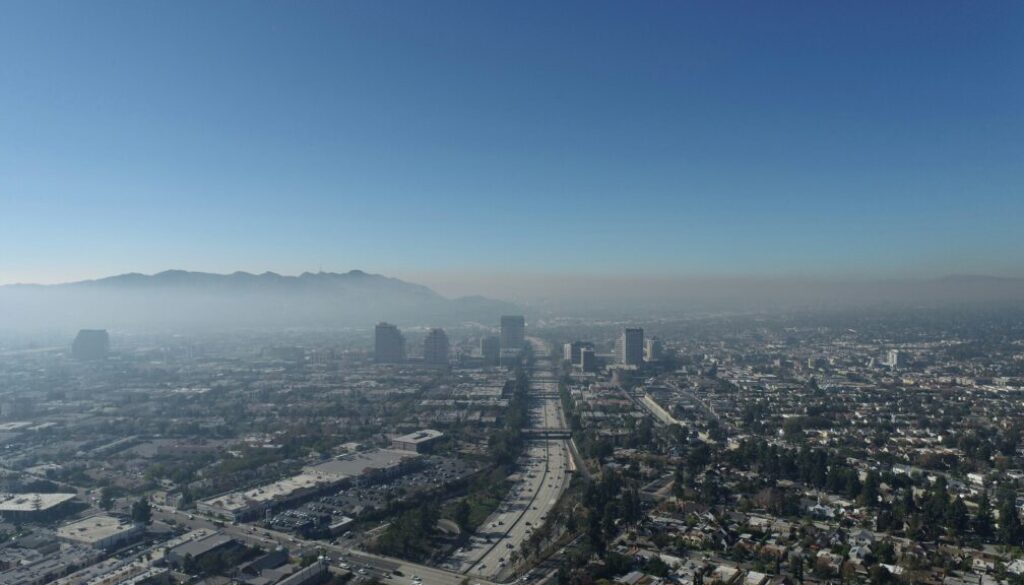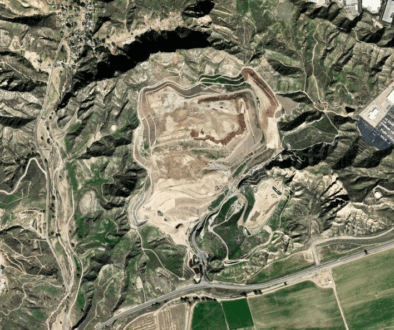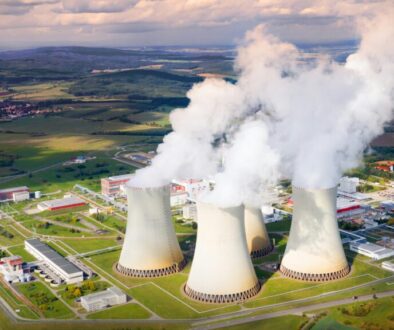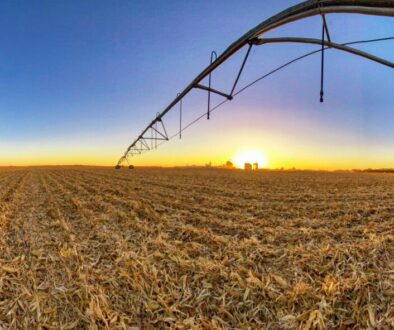Postcard from California: Despite strict regulations, the state still has the nation’s dirtiest air
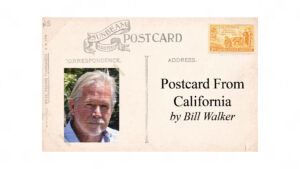 In the years after World War II, the smog in Los Angeles was so thick that at times people could see no farther than three blocks.
In the years after World War II, the smog in Los Angeles was so thick that at times people could see no farther than three blocks.
Despite efforts to limit emissions from power plants and oil refineries, the eye-burning, lung-choking blanket of smog remained. Then, in the 1950s, groundbreaking research by a biochemistry professor at the California Institute of Technology, Dr. Arie Haagen-Smit, determined that the main culprit was automobile exhaust.
His discovery led in 1966 to California setting the first tailpipe emissions standards in the US. A year later, the federal Air Quality Act granted California the right to set its own increasingly tougher standards, and dozens of other pioneering clean-air regulations have followed. The California Air Resources Board (CARB) boasts that since the 1980s, California cars have been the cleanest in the world.
But California still has the dirtiest – and most unhealthy – air in the nation.
Using data from official air-quality monitors, the American Lung Association (ALA) annually ranks US cities for levels of smog, or ground-level ozone, which is formed by exposure of chemicals in auto and industrial emissions to heat and sunlight. The ALA also ranks cities for levels of tiny airborne particles of soot, or particulate matter (PM), from auto and factory emissions and other sources.
ALA’s latest State of the Air report, compiling data for 2021 to 2023, was issued in April. The three worst cities for both ozone and year-round PM pollution, and five of the 10 worst, were in California. For short-term PM – spikes lasting hours or days – California had three of the five worst cities and again, five of the 10 worst.
Five other California cities were among the 25 worst in one or more of the three categories of pollution. Statewide, more than nine in 10 Californians live in a city the ALA gave a failing grade, because it exceeded national ambient air quality standards. None of California’s major metro areas are currently in full compliance with federal standards.
With its vast network of car-clogged freeways, in the report Los Angeles continued to rank worst for ozone pollution, as it has for 24 of the past 25 years. Three cities in the agricultural San Joaquin Valley – Bakersfield, Visalia and Fresno, where auto exhaust mixes with farming dust, pesticides and pollen – ranked at or near the top in all three categories.
Bakersfield, worst for both year-round and short-term particle pollution and third worst for ozone, could fairly be said to have the unhealthiest air in the country.
Bakersfield posts “yellow flag” advisories on days when children and other sensitive groups should stay inside and “red flag” warnings when everyone in the city of more than 400,000 should stay in. About 1 in 4 children in Bakersfield and Kern County has asthma, more than 2.5 times higher than the statewide rate.
It’s not that California has seen no progress toward cleaner air.
From 2020 to 2022, Los Angeles had 55 fewer days when ozone exceeded federal standards than from 1996 to 1998. A study by chemists at the University of California at Berkeley found that levels in Los Angeles of the smallest particles of PM dropped by half from 1999 to 2012.
Last year, the regional San Joaquin Valley Air Pollution Control District, which covers a broad area including Bakersfield and Fresno, for the first time reached compliance with federal standards for year-round levels of the smallest particles. (The achievement could be short-lived, because in February the US Environmental Protection Agency [EPA] tightened the standards for soot.)
Why does California’s air remain so dirty?
The number of exhaust-spewing vehicles in California keeps growing, from 12 million when emissions standards were first set to more than 30 million today. The lack of adequate public transportation makes it hard for Californians to get out of their cars. California’s geography also limits progress: Los Angeles and the San Joaquin Valley are flanked by mountains that trap and concentrate polluted air.
The unique challenges of geography and the sheer number of vehicles in the nation’s most populous state are why Congress gave California the right to set its own emissions standards. But the mountains and the state’s size are facts of life, and making gasoline vehicles run cleaner can only go so far.
In 2020, California Gov. Gavin Newsom set a goal to ban of sales of new gasoline cars and light trucks beginning in 2035, and two years later CARB announced it would phase out diesel cargo trucks. California now has more than two million electric vehicles (EVs). But EV sales have leveled off, dimming prospects for reaching the goal – and more setbacks loom.
President Trump, who on the campaign trail railed against electric vehicles, is expected to end the Biden administration’s $7,500 federal rebate for buyers of EVs. On his first day in office he signed an executive order signaling intent to cancel California’s EV mandates by revoking the state’s right to set its own standards.
On May 1, Republicans in the US House of Representatives did their part to fulfill Trump’s order, passing legislation to repeal California’s EV mandates. The measure’s future is uncertain, because the Senate parliamentarian doesn’t believe Congress can legally repeal the EPA’s policy granting California’s right to set its own rules. The final say may come from the US Supreme Court, which is likely to hear a challenge to the rules by automakers.
The Trump administration and the automakers argue that California’s rules are aimed at fighting climate change, a national crisis not unique to California. But the rules are also about public health.
A 2019 National Institutes of Health study estimated that the deaths of up to 40,000 Californians a year are associated with air pollution. CARB estimates that in the first five years after a ban on new gasoline vehicles, the state would see 1,290 fewer cardiopulmonary deaths, 460 fewer hospital admissions for cardiovascular or respiratory illness, and 650 fewer emergency room visits for asthma.
To clean up California’s air and protect the health of its 39 million residents, it’s crucial that the state continue its groundbreaking efforts to control vehicle emissions. Federal policymakers must not stand in the way.
- Bill Walker has more than 40 years of experience as a journalist and environmental advocate. He lives in California’s San Joaquin Valley.
(Opinion columns published in The New Lede represent the views of the individual(s) authoring the columns and not necessarily the perspectives of TNL editors.)
(Featured photo by Matthew Parsanian on Unsplash)
